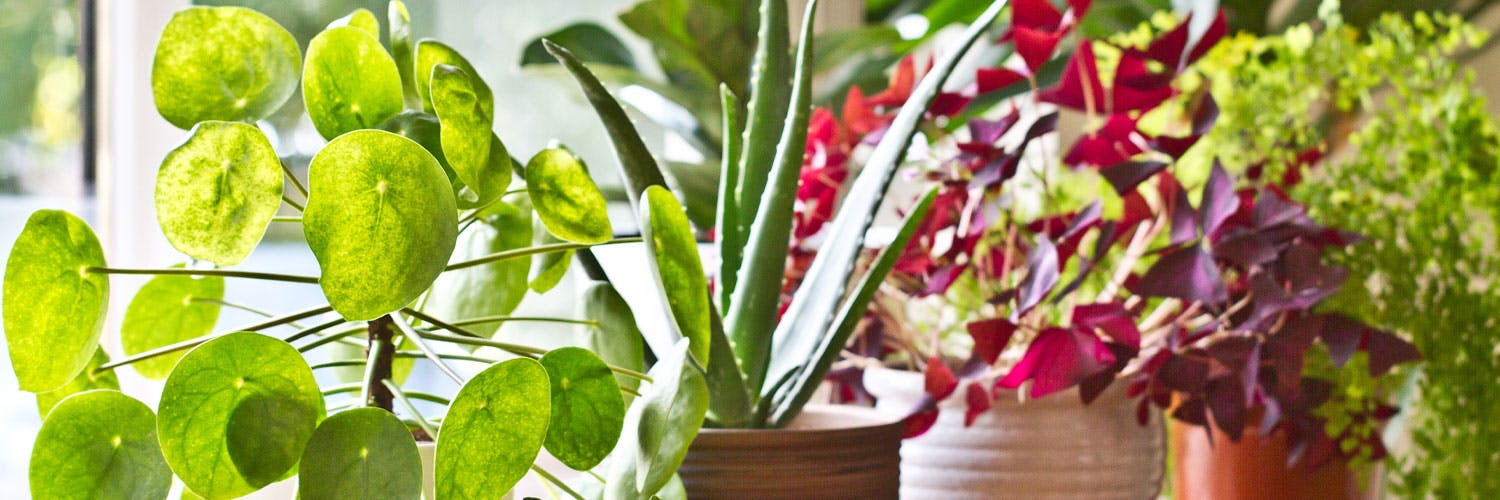What your plant needs to live: How plants feed and live
Plants are living things and this is one of the aspects that make them so fascinating to care for and collect. From our personal experience it is easy to sense what another living thing needs to survive: food, oxygen, water and rest. This is why it is more or less easy to know how to care for an animal.

Plants are living beings and this is one of the aspects that make them so fascinating to care for and collect. From our personal experience, it is easy to intuit what another living being needs to survive: food, oxygen, water and rest. This is why it is more or less easy to know how to take care of an animal.
But with plants it's a different matter, because while it's true that they're alive and need care, they're very different from ours. That's why knowing their processes and needs is the number one secret to ensuring your green companions grow up healthy, radiant, and strong.
How do plants feed?
Humans need to ingest organic substances in order to obtain the nutrients we require, but plants are autotrophs; that is, they themselves produce their food from inorganic substances.
Independent and self-sufficient, plants require inorganic compounds such as phophore, calcium, nitrogen, magnesium and other mineral salts. These nutrients are obtained from water and soil. A plant needs 4 fundamental things to live: water, soil or substrate, air and sun. From this it is able to generate everything it needs.
The process of feeding plants is made up of 3 parts: taking nutrients from their substrate and the air, converting those nutrients into food, and carrying the food throughout the plant. Through this process, it obtains the necessary food to continue growing and perform its vital functions. Another big difference between the diet of plants and human beings: we get fat, while in plants the part of the food that is not immediately used/consumed is stored in leaves, roots, seeds and fruits.
of feeding plants step by step The process
begins when you water the plant. The water dissolves the inorganic compounds present in the substrate, making it more accessible to the plant. The absorbent hairs of the plant's roots take in the nutrients and mineral salts, mixing them together and creating the raw sap. The raw sap rises through the woody vessels, very thin tubes that run through the plant as if they were veins and arteries.
The leaves of the plant have small pores that are called stomata. Carbon dioxide enters through the stomata and mixes with the raw sap and begins the process of photosynthesis, which is how the processed sap and oxygen are created.
Photosynthesis requires sunlight, which is captured by chlorophyll, a substance present in plant leaves that gives them their characteristic green color, just as the concentration of melanin gives human skin its color. As a byproduct of the photosynthesis process, the plant releases oxygen, which is what humans use to be able to breathe. It is for this reason that forests and jungles are often called 'plant lungs', as they are responsible for creating the oxygen we breathe.
Once the sap produced through photosynthesis in the leaves has been created, it is distributed throughout the plant through the Liberian vessels, feeding all sections of the plant, including the woody stems.
What about fertilizer?
Compost contains some of the nutrients needed for plant growth. While the substrate of a plant may contain these necessary compounds, the concentration may vary. By putting fertiliser in the soil or water, a complete supply of these substances is guaranteed, which, being always available to the plant, will contribute to its growth.
Fertilizer isn't always a must, but it can help your plants grow stronger and faster. Think of compost as a vitamin supplement to stimulate plant development. Before applying any type of fertilizer, you should get advice, as the needs of each species of plant are very different. Fertilizer for succulents is not the same as one specially formulated for an Areca palm. Using the wrong fertilizer can upset the balance of the substrate and kill your plant, so be careful.
Not all plants require soil, as what they use for food is a mixture of mineral salts and water. The earth is only a means of support. This knowledge has made it possible to create hydroponic crops and has helped to understand the morphology of plants that can survive in water.



